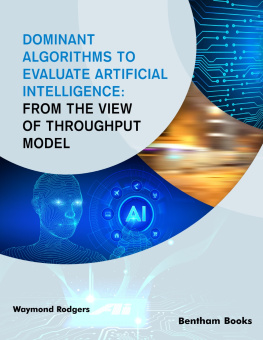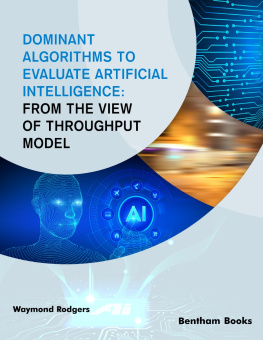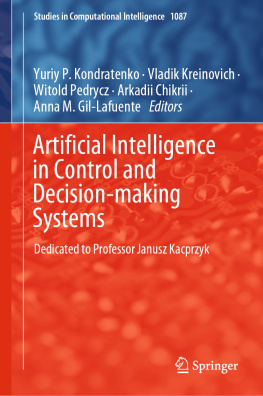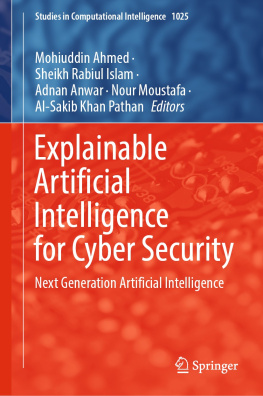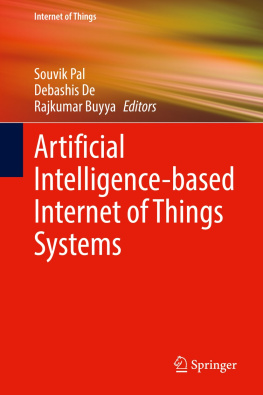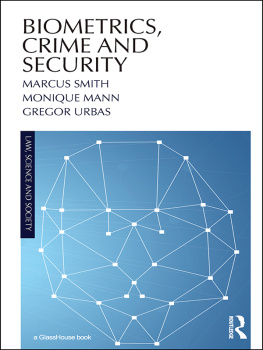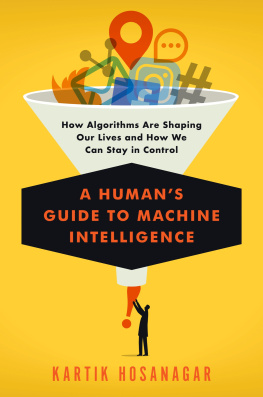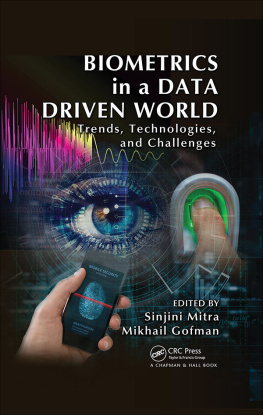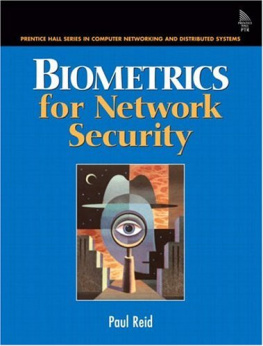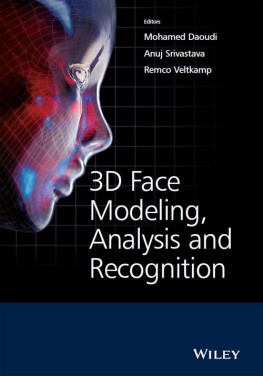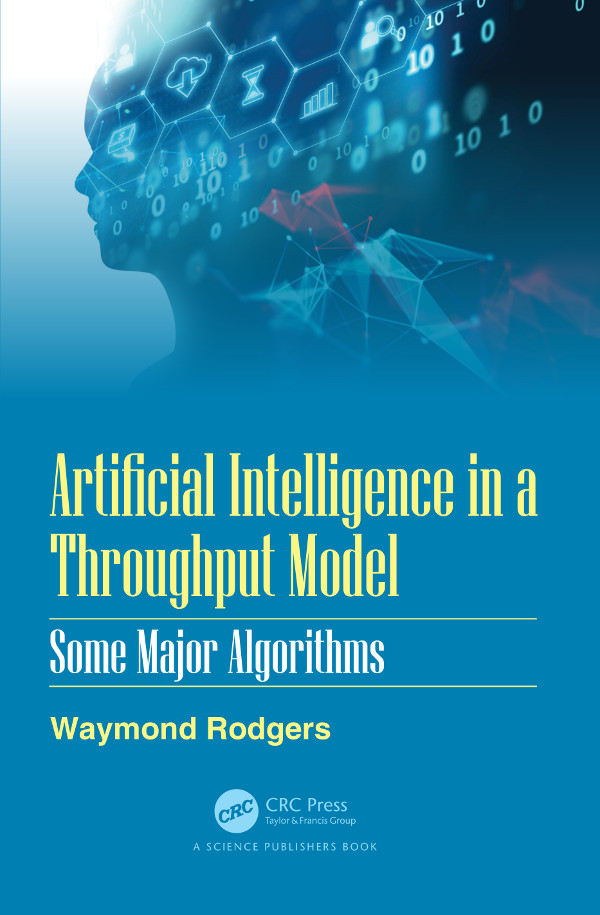
CRC Press
Taylor & Francis Group
6000 Broken Sound Parkway NW, Suite 300
Boca Raton, FL 33487-2742
2020 by Taylor & Francis Group, LLC
CRC Press is an imprint of Taylor & Francis Group, an Informa business
No claim to original U.S. Government works
Version Date: 20200120
International Standard Book Number-13: 978-0-367-21781-5 (Hardback)
This book contains information obtained from authentic and highly regarded sources. Reasonable efforts have been made to publish reliable data and information, but the author and publisher cannot assume responsibility for the validity of all materials or the consequences of their use. The authors and publishers have attempted to trace the copyright holders of all material reproduced in this publication and apologize to copyright holders if permission to publish in this form has not been obtained. If any copyright material has not been acknowledged please write and let us know so we may rectify in any future reprint.
Except as permitted under U.S. Copyright Law, no part of this book may be reprinted, reproduced, transmitted, or utilized in any form by any electronic, mechanical, or other means, now known or hereafter invented, including photocopying, microfilming, and recording, or in any information storage or retrieval system, without written permission from the publishers.
For permission to photocopy or use material electronically from this work, please access www.copyright.com (http://www.copyright.com/) or contact the Copyright Clearance Center, Inc. (CCC), 222 Rosewood Drive, Danvers, MA 01923, 978-750-8400. CCC is a not-for-profit organization that provides licenses and registration for a variety of users. For organizations that have been granted a photocopy license by the CCC, a separate system of payment has been arranged.
Trademark Notice: Product or corporate names may be trademarks or registered trademarks, and are used only for identification and explanation without intent to infringe.
Visit the Taylor & Francis Web site at
http://www.taylorandfrancis.com
and the CRC Press Web site at
http://www.crcpress.com
[Artificial Intelligence] is going to change the world more than anything in the history of mankind. More than electricity.
AI oracle and venture capitalist Dr. Kai-Fu Lee, 2018
In 1964, Isaac Asimov envisioned the 2014 Worlds Fair for The New York Times. He was correct about the smartphone, self-driving cars and the Keurig machine; however, he was not able to predict advanced battery technology and space colonization. Foresight is challenging, and is only becoming more and more so.
Artificial Intelligence (AI) is the next major disruptor in the way we live, learn, work and adopt to different situations. Disruptors represent a person, place or thing that prevents something, especially a system, process or event, from continuing as usual or as expected. Our houses, our cars, our toasters, all of seem to be teeming, even overflowing with intelligence, like some huge fungus gone amuck. Artificial Intelligence is here to stay, and society needs it, right now! Artificial Intelligence is changing the world each day. At one time, a domain of science fiction, today many of our systems are powered by Artificial Intelligence.
The field of Artificial Intelligence has awed researchers and users alike. Artificial Intelligence is the intelligence of machines and a subset of computer science and cognitive science. Fundamental challenges of Artificial Intelligence embrace such features as reasoning, knowledge, planning, learning, communication, perception and the capability to move and manipulate objects.
This book addresses the promise of Artificial Intelligence that is enhancing our lives. Artificial Intelligence-based systems are now outshining medical specialists in diagnosing certain diseases. The implementation of Artificial Intelligence in the financial system is magnifying access to credit to borrowers whose loan applications were once rejected. In addition, automated hiring systems have the potential to evaluate candidates on the basis of their authentic qualifications as opposed to characteristics such as age or appearance that oftentimes mislead decision makers from making the correct decision.
One of the many advantages of utilizing Artificial Intelligence and machine learning is that it has the ability to ingest huge amounts of data, often in real-time. Further, it can take that data and begin to scrutinize it based upon organizational necessities, conditions and constraints. In addition, it can bring about those necessities, conditions and constraints based on the data an organization owns.
Moreover, many physical and behavioral biometric technologies such as fingerprint, facial recognition, voice identification, etc., have enhanced the level of security substantially. Governments and corporates have embraced these technologies to increase customer satisfaction. Nevertheless, the current state of biometrics still faces challenges to lessen criminal and terrorist activities as well as other digital-based financial frauds. This is especially the case when individuals and organizations are faced with selecting the correct algorithm to a problem. To overcome this state of affairs, the market undertakes a host of research and development programmes to assimilate biometrics with artificial intelligence in decision-making modeling. The advanced software algorithm platform of Artificial Intelligence processes information offered by biometric technology to detect and prevent dubious activities in a bid to confront cyber and physical crimes in the global and local communities. This development has provided an expanded growth opportunity for the biometrics technology, given that the technology is set to increase the security and internal control operations many folds.
This book provides an overview of the various Artificial Intelligence techniques, biometric technologies, decision-making algorithms and the subsequent market expansion opportunities. Further, it proposes a Throughput Model, which draws from computer science, economics and psychology to model perceptual, informational sources, judgmental processes and decision choice algorithms. This approach provides how huge data and biometrics might be implemented to reduce risks to individuals and organizations, especially when dealing with digital-based mediums.
The book also examines the ethics behind Artificial Intelligence. That is, how machine learning, neural networks, and deep learning technology are positioned today for many individual and organizational uses, including self-driving cars, online recommendations, search engines, handwriting recognition, computer vision, online ad serving, pricing, prediction of equipment failure, credit scoring, fraud detection, OCR (optical character recognition), spam filtering, etc. Therefore, this book addresses ethical consideration directed at the growing ubiquity of machine learning, neural networks, and deep learning in organizations. This particular issue is essential in order to understand what and how to mitigate human cognitive biases and heuristics into Artificial Intelligence technology.
First and foremost, my thanks to the Almighty for His blessings throughout the course of my research work without which I would not have been able to complete this research successfully. I also acknowledge deeply all those who have helped me to put these ideas well above the level of simplicity into something concrete.
Further, I would like to thank my students. Learning is a collaborative activity when it is happening at its best. We work together using each others strengths to build our own challenges, developing our thinking and problem solving skills. Therefore, the relationship we develop with our students at every age is one that is to be respected, nurtured and admired.
Next page

